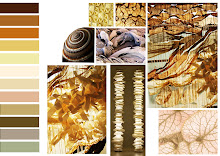
Jackson Pollock's Fractals
The abstract painter Jackson Pollock (1912-1956) is widely known for his spectacular, wall-sized paintings, which typically feature a combination of swirling drips, bright splotches, and bold, rhythmic streaks.Pollock's signature technique, which he developed in the late 1940s and early 1950s, was to drip house paint--in colors such as black, white, silver, taupe, and teal--from hardened, worn-out brushes, sticks, and other applicators onto enormous sheets of canvas spread across the floor. His approach, however, was somewhat more systematic than the chaotic results might suggest.
Pollock would begin by using a series of fluid strokes to draw a collection of loopy figures. When the paint dried, he would connect the scattered shapes with darker, thicker slashes of pigment. Additional layers of dripped, poured, and hurled paint would further obscure the original forms, creating a dense web of trails across the canvas.
The researchers discovered that Pollock's patterns could be characterized as fractals--shapes that repeat themselves on different scales within the same object. In a fractal object or pattern, each smaller structure is a miniature, though not necessarily identical, version of the larger form. Fractals often occur in nature, from the meanderings of a coastline, in which the shapes of small inlets approximate the curves of an entire shoreline, to the branchings of trees and the lacy forms of snowflakes and ferns.








